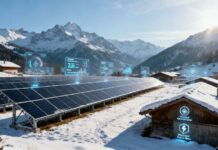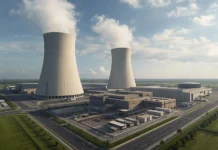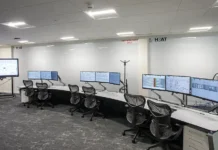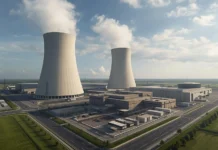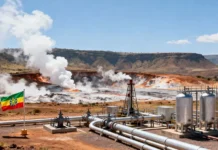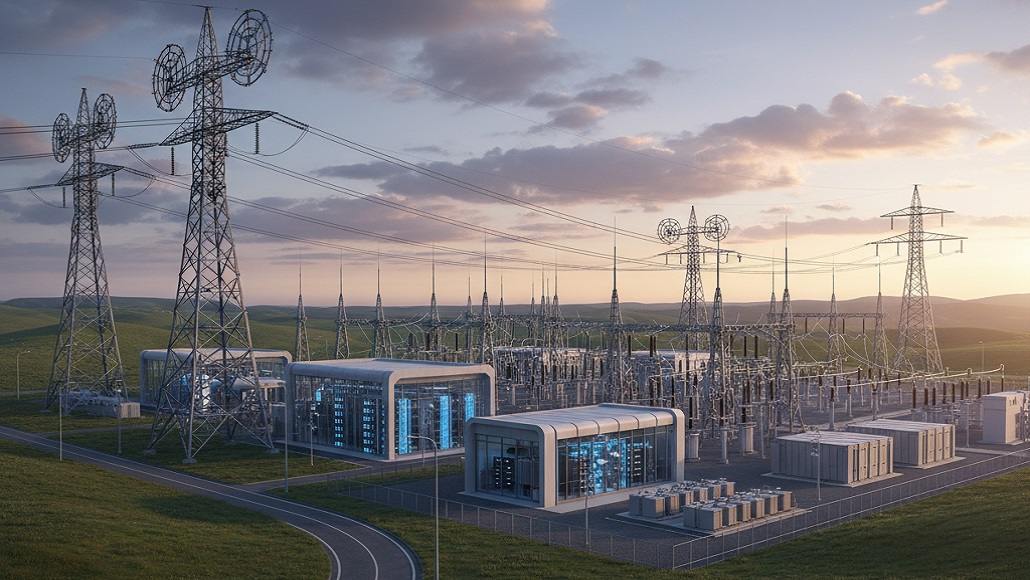Next-Gen Grid Technologies: Building Resilient Energy Networks
The electric power grid stands as one of humanity’s most complex and consequential engineering achievements, yet much of its infrastructure was designed for a fundamentally different energy landscape. As renewable energy sources proliferate, electric vehicles multiply, and climate-driven extreme weather intensifies, the limitations of legacy grid systems become increasingly apparent. Smart energy grids powered by artificial intelligence, advanced sensors, and sophisticated automation are transforming electricity networks from passive transmission systems into dynamic, self-optimizing platforms that deliver unprecedented reliability, efficiency, and resilience.
The Grid Modernization Imperative
Traditional electric grids operated a small number of centralized power plants with built-in redundancies, enabling rapid response to disruptions while maintaining supply. Today’s grid faces far greater complexity with millions of distributed energy resources including rooftop solar panels, electric vehicle batteries, and microgrids powering critical infrastructure. While this shift improves sustainability and resilience, it introduces new vulnerabilities as traditional systems lack the visibility and control necessary to manage energy flows across numerous dynamic and decentralized sources.
The grid was simply not designed for the flexibility demanded by the new energy landscape. Historical infrastructure built for centralized, fossil fuel-driven generation cannot adequately support decentralized, digital-first energy systems. This critical gap has created an urgent need to fundamentally rethink how energy systems are designed, managed, and protected.
Digital grid technologies offer pathways to upgrading antiquated infrastructure, enhancing grid management, and improving performance through real-time monitoring, predictive analytics, and automated control systems. Less than a quarter of surveyed utility executives report their organizations are largely leveraging digital twins to better predict power flow, quality, and asset performance, indicating substantial untapped potential.
Artificial Intelligence as the Grid’s Cognitive Layer
Artificial intelligence and machine learning function as the brain behind smart energy grids, processing vast amounts of data generated by grid sensors and devices to enable real-time analysis of power usage, network conditions, and predictive insights. With AI, utilities can detect faults, predict maintenance needs, and prevent outages before they happen. Machine learning algorithms constantly improve over time, refining energy distribution and optimizing grid operations to enhance forecasting accuracy and support better renewable energy integration.
AI-driven demand forecasting analyzes historical consumption data, real-time sensor readings, weather patterns, and other variables to predict when and where electricity demand will surge. This predictive power allows grid operators to prepare for demand spikes in advance by ramping up generation or shifting loads rather than reacting after the fact. AI-driven demand forecasting has proven significantly more accurate than traditional methods, enabling utilities to activate demand response programs or bring peaking power plants online precisely when needed.
In regions with rapid renewable energy growth, AI tools prove essential for balancing wind and solar intermittency against consumption peaks. Modern smart grids have many controllable elements including gas turbines, battery storage, industrial demand response, and smart home devices. AI systems automatically redistribute power flows or dispatch distributed energy resources when detecting impending imbalances. AI-powered smart transformers and grid controllers sense sudden spikes in local usage and route additional power to that neighborhood, preventing overloads.
The National Renewable Energy Laboratory is examining ways to use generative artificial intelligence to revolutionize the power grid by providing decision support and predictive planning and control. Generative AI, in concert with next-generation foundation models, can transform grid operations by providing proactive decision support and predictive online control to improve efficiency, reliability, and resilience. The technology also helps achieve cyber-resilient and all-hazards resilient grids by reducing blackouts and brownouts while ensuring all communities have access to affordable, reliable, and clean electricity.
Internet of Things Enabling Comprehensive Visibility
The Internet of Things, with its network of interconnected devices, plays a crucial role in enabling smart energy grids to function smoothly. Sensors embedded throughout the grid gather real-time data about energy consumption, grid health, and environmental conditions. This data allows for precise energy management, helping prevent overloads, detect faults, and balance energy loads across different regions.
IoT-powered smart meters provide both consumers and utilities with insights into energy usage, enabling more informed decisions about consumption patterns. These technologies allow dynamic and efficient responses to fluctuations in demand and supply, improving grid reliability and minimizing energy waste. Advanced metering infrastructure systems are evolving from periodic data collection to real-time data streaming, opening a world of efficiencies for demand response, distribution automation, and other smart grid applications.
Eaton’s smart grid network exemplifies IoT integration, starting with the Yukon enterprise software system that manages power company data and decision-making. Using wired or wireless networks, communications travel through IP gateways and out into RF mesh networks. Across service areas, RF-enabled sensors, meters, load control devices, and DNP devices work together to maximize operational efficiency.
The modular, network-first approach allows municipal power companies to install RF canopies of gateways and relays covering entire municipalities, then target specific applications like demand response or distribution automation to improve operational or energy efficiencies. New meters and intelligent devices can be connected to networks as more complete smart grids are built over time, reducing upfront costs while guaranteeing return on investment and creating platforms for future growth.
Digital Twin Technology Revolutionizing Operations
Digital twins create virtual representations of physical grid assets using data from sensors, historical records, maintenance logs, and simulation models. These virtual platforms enable operators to monitor, simulate, and optimize infrastructure in ways previously impossible. Implementing digital twins of grids allows simulation and testing of various scenarios in real-time, enabling predictive insights and proactive adjustments to enhance operational efficiency, asset management, and grid resilience.
Digital twins provide safe spaces for testing new smart grid technologies in virtual environments before physical deployment. The HILLTOP+ microgrid simulation platform, originally prototyped by MIT Lincoln Laboratory, models and tests new smart grid technologies including utility-scale battery storage, providing rural electric utilities with increased confidence in deploying these technologies. Energy tech startups benefit from HILLTOP+ grid modeling services, enabling them to develop and virtually test smart grid hardware and software products for scalability and interoperability.
Generative AI models developed by researchers will provide inputs to modeling services based on these simulation platforms, assisting rural electric utilities and energy tech startups in mitigating risks associated with deploying new technologies. This integration of generative AI with digital twin technology represents a powerful example of how artificial intelligence can transform sectors by being closely integrated with domain expertise.
Grid operators can use digital twins to test impacts of maintenance timing, operational adjustments, or equipment upgrades without placing actual assets at risk. This capability proves particularly valuable for facilities with aging equipment where physical experimentation carries unacceptable risks. Predictive maintenance capabilities enabled by digital twins analyze historical and real-time sensor data to identify anomalies and patterns preceding equipment failures, allowing operators to schedule maintenance proactively rather than reactively.
Advanced Distribution Management and Automation
Distribution automation systems employ sensors, controllers, and communication networks to monitor and control electricity distribution in real-time. These systems enable self-healing grids that automatically detect faults, isolate affected sections, and restore power through alternate pathways without human intervention. Network automation strategies enhance energy sector efficiency by implementing dynamic mapping and documentation for network visibility, optimizing resource allocation, and improving compliance measures.
Energy corporations face significant challenges maintaining site availability due to lack of network visibility for troubleshooting, inadequate documentation for stringent compliance, and absence of standardized processes. Automation platforms address these deficiencies by enabling higher network availability and more robust infrastructure. Implementing network automation to inventory, audit, update, and enforce consistent configuration policies can eliminate errors and reduce outages by over 90 percent.
Smart grid technologies enhance resilience by allowing operators to adjust energy flows dynamically using real-time monitoring and predictive analytics. Grid flexibility equipped with these capabilities becomes increasingly important as extreme weather events and other disruptions grow more frequent. Flexible grids can accommodate variable renewable generation while maintaining stability through rapid adjustments coordinated across distributed resources[.
Closed-loop automation systems represent the most advanced implementation of grid intelligence. By ingesting real-time performance data, learning from historical patterns, and applying AI algorithms, these solutions detect emerging issues before they escalate. When network traffic is detected to be low, systems automatically adjust energy-saving features to optimize use without compromising user experience. This proactive operational mode improves reliability while reducing downtime, operational costs, and burden on human operators.
Energy Storage Integration and Grid Services
Battery energy storage systems integrated with smart grids provide multiple critical services. Frequency regulation maintains grid stability by rapidly injecting or absorbing power to balance supply and demand fluctuations. Energy arbitrage involves charging batteries when wholesale electricity prices are low and discharging when prices peak, capturing spreads that offset operating costs. Capacity markets compensate battery owners for making power available during peak demand periods, providing predictable revenue streams.
AI optimization determines optimal charging and discharging schedules based on electricity price forecasts, renewable generation predictions, and grid condition projections. Machine learning algorithms analyze patterns across time to identify strategies maximizing both grid support value and battery longevity. These sophisticated control systems extract maximum value from storage assets while providing essential grid stabilization services.
Virtual power plants aggregate distributed energy resources including residential solar systems, electric vehicle batteries, and commercial storage systems into controllable portfolios that function like conventional power plants. By leveraging these distributed assets, virtual power plants improve grid resilience and defer high peak energy market purchases while enabling individuals and businesses to monetize their distributed generation and storage capabilities.
Cybersecurity and Operational Resilience
As grids become more digital and interconnected, cybersecurity emerges as a critical priority. Digital grids encompassing public and private infrastructure and communications systems are essential for managing, protecting, routing, and controlling data flows between cyber assets. Comprehensive cybersecurity protects both physical assets and digital systems across entire grids, preventing attacks that could cause widespread outages or compromise sensitive operational data.
Robust communications infrastructure using public, private, or hybrid systems ensures reliable and scalable connectivity across assets. Integrated control and edge computing pairs centralized control with edge computing capabilities to ensure responsiveness and autonomy at grid edges. Near real-time data processing capabilities are crucial for optimizing system performance and customer outcomes.
Multiple defense layers including firewalls, intrusion detection systems, encryption, and access controls protect against cyber threats. Regular security audits, penetration testing, and incident response planning ensure utilities can detect and respond to attacks rapidly. Compliance with standards including NERC-CIP requirements mandates specific cybersecurity controls for critical grid infrastructure.
The challenge extends beyond technical controls to encompass workforce training, vendor management, and supply chain security. As grid modernization progresses, utilities must plan for and manage cybersecurity challenges to avoid vulnerabilities and inefficiencies that could compromise critical infrastructure.
Regulatory Frameworks and Policy Support
Supportive regulatory frameworks prove essential for grid modernization deployment. Utilities require mechanisms to recover investments in digital infrastructure through rate structures that align incentives with system-wide benefits. Performance-based regulation that rewards reliability improvements, emissions reductions, and customer service enhancements can accelerate smart grid adoption compared to traditional cost-of-service models.
Interconnection standards governing how distributed generation and storage connect to grids must evolve to accommodate proliferating devices while maintaining safety and reliability. Streamlined approval processes reduce barriers for customers installing rooftop solar or battery systems while ensuring installations meet technical requirements.
Data privacy regulations must balance utilities’ needs for consumption data to optimize operations against customers’ rights to privacy and control over their information. Clear policies governing data collection, use, and sharing build trust while enabling smart grid functionalities that require detailed consumption information.
Investment in workforce development ensures utilities have personnel with skills to deploy and operate advanced grid technologies. Partnerships between utilities, educational institutions, and technology providers can cultivate talent pipelines for the evolving industry.
The Future of Intelligent Energy Networks
Next-generation grid technologies are transforming electricity networks from passive infrastructure into active, intelligent systems that enable the clean energy transition. As renewable generation expands, electric vehicle adoption accelerates, and climate resilience becomes paramount, smart energy grids will prove indispensable for delivering reliable, affordable, and sustainable electricity.
The convergence of artificial intelligence, Internet of Things sensors, digital twins, automation, and energy storage creates unprecedented capabilities for managing grid complexity. Utilities implementing these technologies gain advantages through reduced operational costs, improved reliability, enhanced customer service, and greater ability to integrate renewable energy. Early adopters position themselves to lead as the energy industry continues its profound transformation.
Success requires sustained investment in both physical infrastructure and digital systems, cultivation of technical workforce capabilities, evolution of regulatory frameworks, and commitment to cybersecurity. The intelligent, flexible, and resilient energy networks being built today will form the foundation for decarbonized economies, enabling societies to thrive within planetary boundaries while delivering energy access that improves quality of life for all. The future grid is not merely modernized infrastructure but a sophisticated platform orchestrating the complex dance of generation, storage, transmission, and consumption that defines sustainable energy systems.




